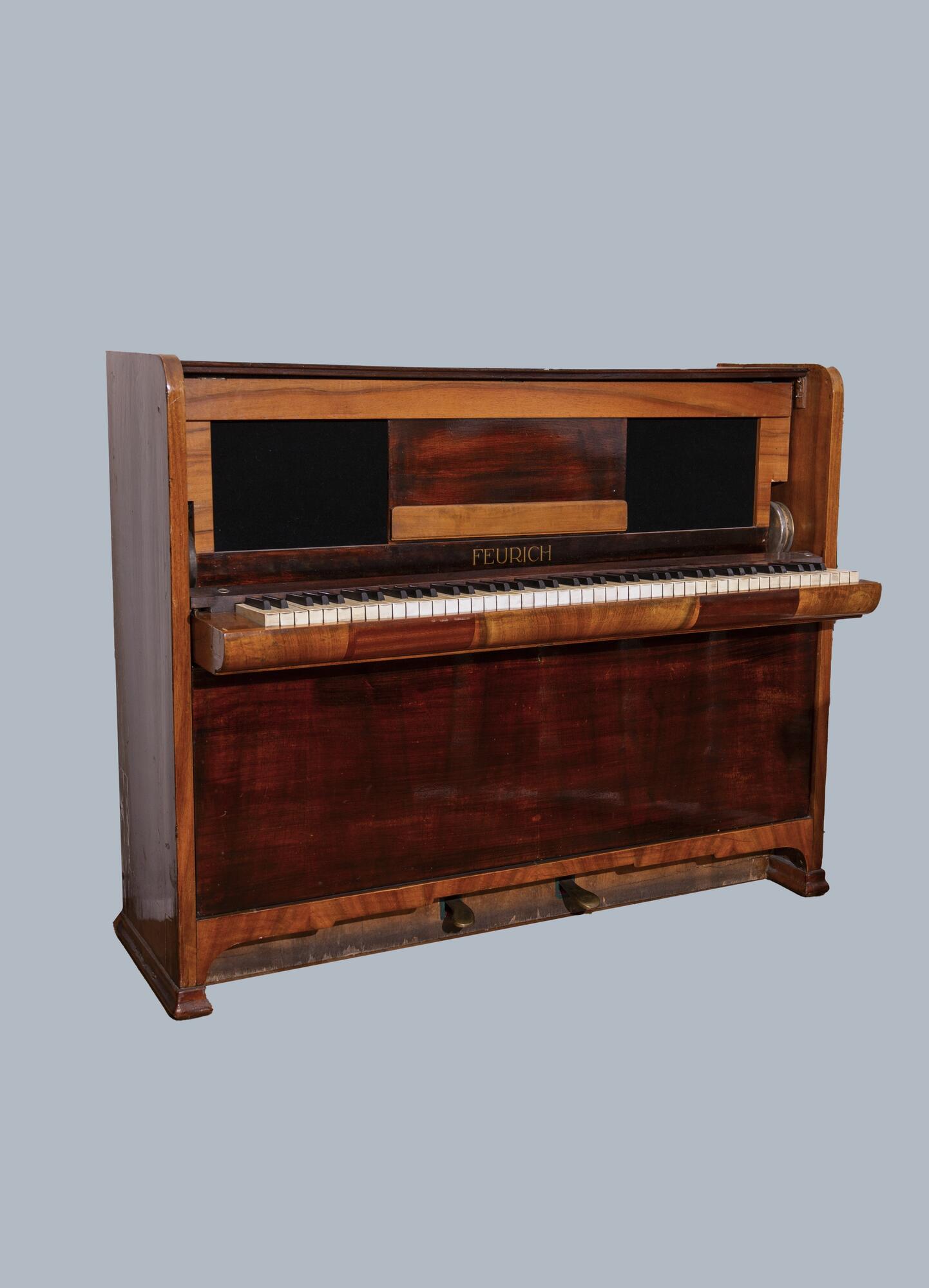In the mid-19thcentury, Leipzig, along with Vienna, London, and Paris, was rightly considered one of the world’s musical capitals and was also recognized as a major trade venue. It was there that the piano and harpsichord maker Julius Gustav Feurich founded his piano manufacturing factory in 1851.
In less than a decade, the company produced over 400 instruments and built a large, well-equipped factory. By the end of the 19thcentury, Feurich had produced almost 14,000 upright and grand pianos, and the company owner was appointed official supplier to the court of Austria-Hungary.
The company’s pianos were sold throughout the world, establishing a market in Australia, Brazil, and Chile. The signature sound boards were made of mountain spruce from Bavarian and Austrian forests. Far ahead of the competition, Feurich became the first piano manufacturer in Germany to build an upright piano with an under-damper action.
In the 1910s, the company’s second factory was opened in Leutzsch, a suburb of Leipzig, which produced around 600 grand pianos and 1000 upright pianos a year. At that time, Feurich was a member of the so-called “Group of Five” — the five leading piano manufacturers in Germany — and supplied instruments for the world’s largest concert venues.
During the First World War, the company lost its leading position in the piano manufacturing industry. Since 2011, the brand has been owned by the Austrian company Feurich — Wendl & Lung, and the bulk of its manufacturing is carried out in China. However, the famous upright pianos are only manufactured in Vienna.
This upright piano is quite unique. It is distinguished from mass-produced, standard models by its hinged keyboard built into the case, the pedals set wider than usual, and the large acoustic windows on the front board, draped in dark fabric.
The instrument is equipped with a double-escapement action and is cross strung. It has 11 single strings, 20 two-string courses, and the rest are three-string courses. The piano has a range of c2–c5.
The piano was used in the working settlement of Talmenka, Altai Krai. Its last owners were the accordionist Andrey Annenkov and the musical instrument maker Nikolay Popov.
The piano is still in working condition and is used
in concerts and museum events dedicated to art and history.




